By Dr. Ian Hunt
While many today may not realize it, long before we became the Abraham Lincoln Presidential Library and Museum, we were simply the Illinois State Historical Library. Beginning in May of 1889, we were tasked with collecting material “bearing upon the political, physical, religious, or social history of the state of Illinois from the earliest known period of time.” Over the last 136 years we have collected a massive volume of materials on a wide range of subjects, including the state’s most famous resident, Abraham Lincoln, which led to our rebranding as the ALPLM in October of 2004.
When I began my internship in January of 2006, I was often reminded by Dr. Thomas Schwartz (the Illinois state historian at the time) that while we were always on the hunt for new Lincoln items, we also needed to find great Illinois items. I would often consider what could best represent the state’s history that we didn’t already have in our collections. Then I had an epiphany: an original 21-star flag that would signify Illinois’s transition from territory to statehood. Illinois became the 21st state in the Union in December of 1818, and a national flag representing its inclusion would be a powerful symbol the ALPLM could use to connect people to countless threads of Illinois history – what it took to achieve statehood, Illinois’s contributions in industry and agriculture, how the state contributed in both peacetime and war, and the long history of the good and bad that would occur within our borders.
The problem was that this flag was used for just a single year in a period when flags were far less common than they are today. Few were made and even fewer have survived into the modern era. So, the goal of bringing a 21-star flag to the ALPLM went unfulfilled for years … until now.
The ALPLM finally managed to acquire this special symbol of Illinois joining the Union, and we’re excited to tell people all about it.
But first a little flag history. The original U.S. flag had 13 stars and 13 stripes, representing the 13 colonies. With the inclusion of Vermont and Kentucky in 1791 and 1792, a new flag was adopted with 15 stars and 15 stripes. The government however quickly realized that adding more stars and stripes for each new state would eventually produce a visual mess. Yet rather than addressing the issue immediately, they simply continued using the 15 star and 15 stripe flag even as America added the new states of Tennessee, Ohio, Louisiana, Indiana, and Mississippi.
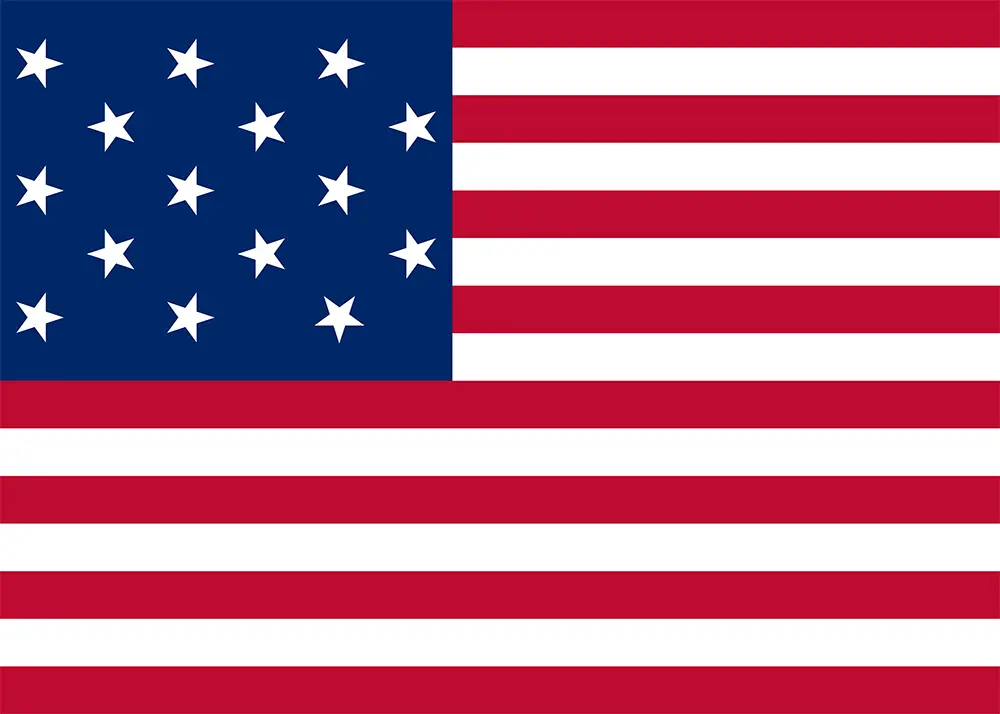 Illustration of the American flag with 15 stars and 15 stripes. (Carl Lindberg via Wikimedia Commons)
Illustration of the American flag with 15 stars and 15 stripes. (Carl Lindberg via Wikimedia Commons)
Finally, in 1818, Congress would pass a new flag code. From that point forward, the American flag would return to the original 13 alternating red & white stripes (representing the original 13 colonies) but would also include a single white star representing each state upon the field of blue. It was further announced that with the addition of each new state, the new flag would become official on July 4th. This meant that on July 4, 1818, a new flag was adopted, and the number of stars on the field of blue jumped to 20. When Illinois became a state in December of that year, as set out in the new law, the flag officially gained a 21st star on July 4, 1819.
The flag law did not specify how the stars and stripes were to be arranged on the new flag, so people came up with all kinds of designs. Some had rows of stars. Some had white stripes at the top and bottom instead of red as we have today. Many flags used variations on a newly popular star pattern called the “grand luminary.” This approach arranged all the stars in the shape of one large star to illustrate the motto e pluribus unum – out of many, one.

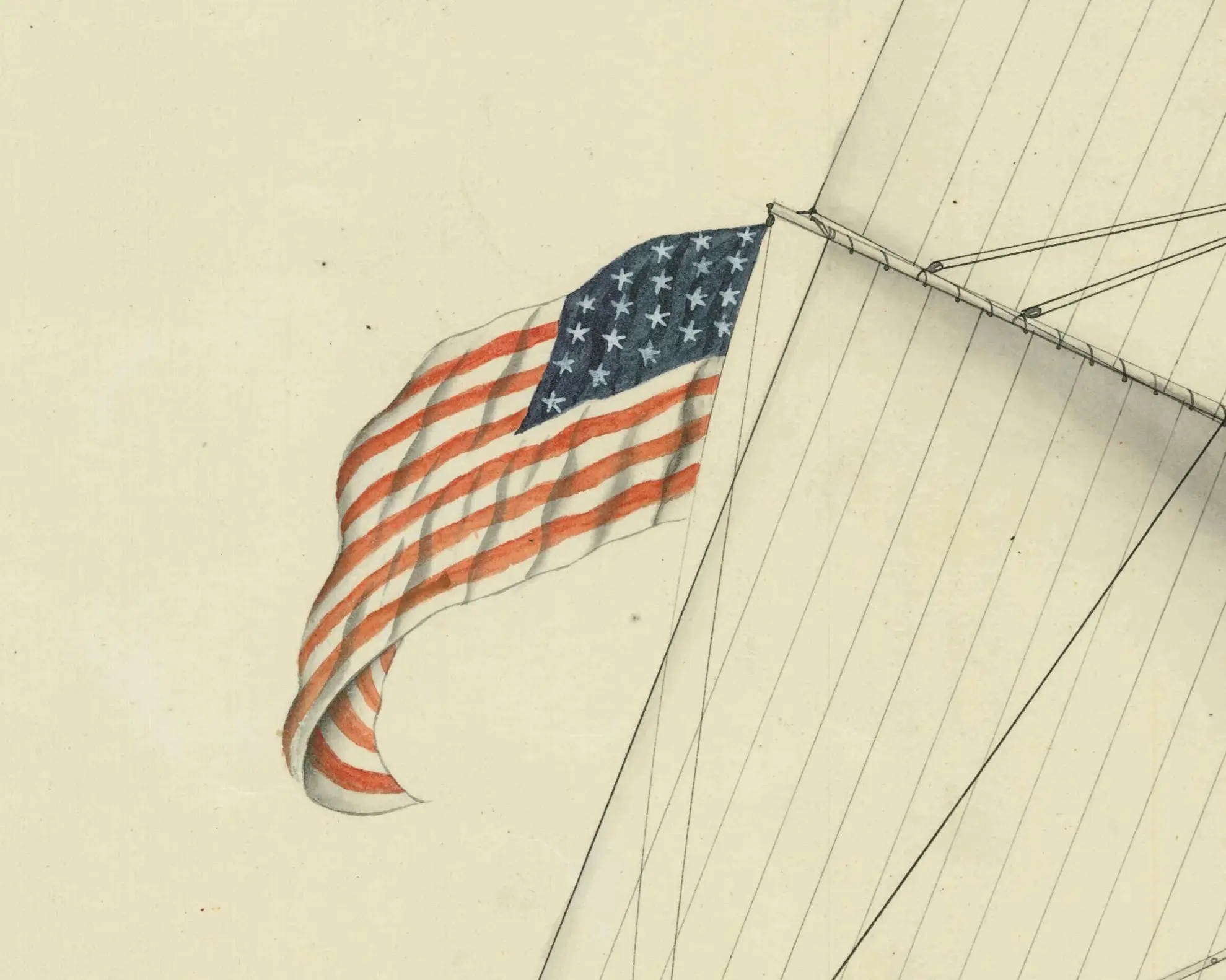 Illustration of a 20-star flag on the USS Lynx. It has white stripes at the top and bottom, not red. (National Archives and Records Administration)
Illustration of a 20-star flag on the USS Lynx. It has white stripes at the top and bottom, not red. (National Archives and Records Administration)
USS Lynx

×
Detail from USS Lynx illustration

×
With the additions of Alabama in December of 1819 and Maine in March of 1820, a new national flag with 23 stars would become official on July 4, 1820. That meant the 21-star American flag – the Illinois flag, if you will – was official for only one year.
The flag obtained by the ALPLM uses the grand luminary pattern and has white stripes at the top and bottom. It is made of cotton and measures about 7 ½ feet by 6 ½ feet. The flag is worn and tattered from use, so the stripes may originally have been longer. The bulk of the flag was hand-sewn, but there is some mechanical stitching from what appear to be later repairs. It is colored with natural dyes, which actually hold their color better than the artificial dyes that started coming into use in the 1850s.
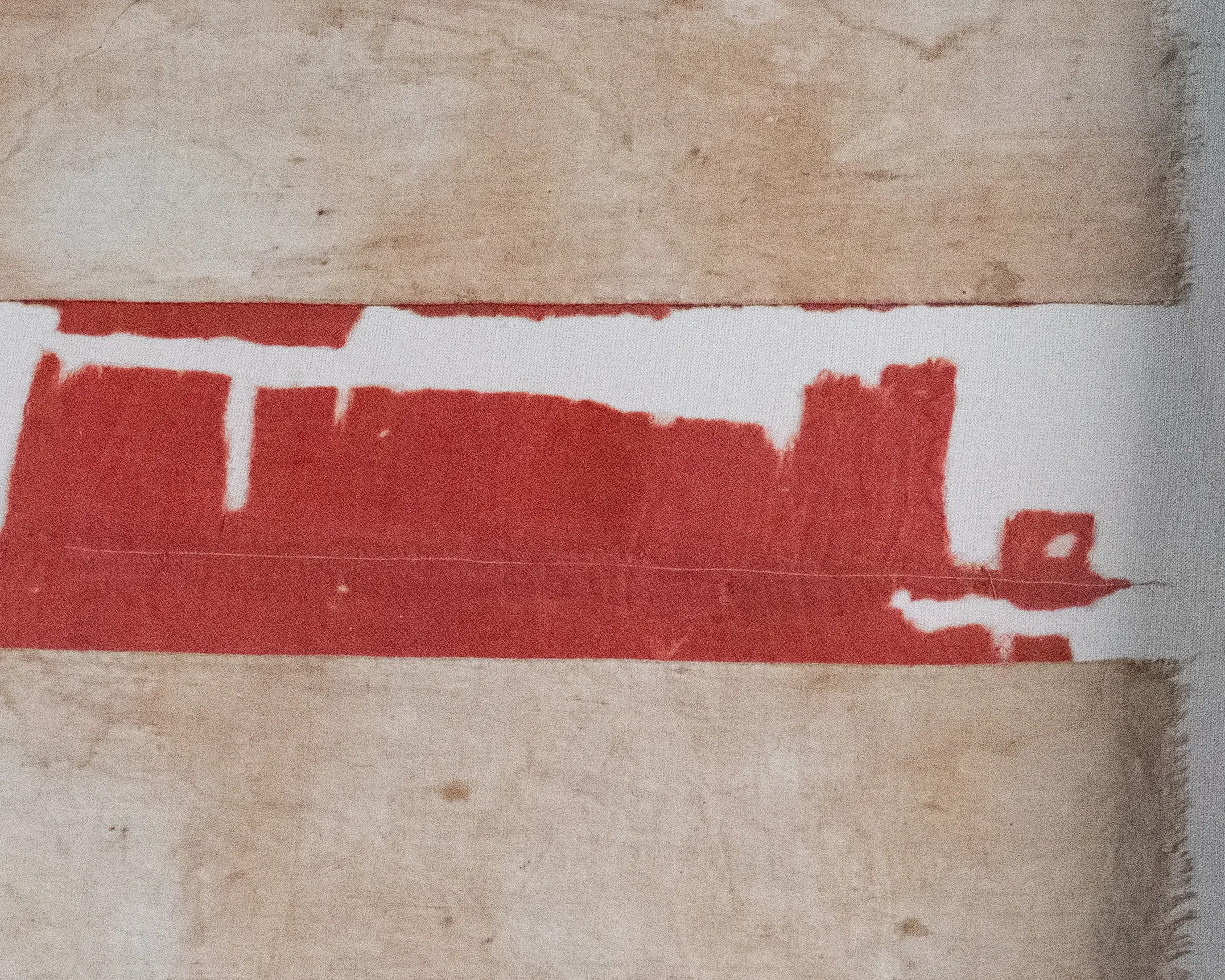 Close-up of machine stitching added to the flag.
Close-up of machine stitching added to the flag.
Close-up of repair with machine stitching

×
This flag first came to public attention in 1997, when it was sold at auction by prominent collector and author Norm Flayderman. It was purchased by the nation’s leading flag expert and collector, Ben Zaricor. Following Mr. Zaricor’s death in June of 2022, his heirs made the decision to sell a portion of his collection, including this flag. The ALPLM bought it for $15,625 and spent an additional $16,000 to have it conserved so the fragile flag would not deteriorate further. Money for the purchase came from funds donated to the state decades ago to support historic research, artifact acquisition and preservation.
Few antiques come stamped with the date they were manufactured. To figure out how old they are, experts look at things like the material, design and construction techniques and compare them to the known history of similar artifacts. Two top experts, Flayderman and Zaricor, did that and concluded the flag was made sometime between 1818 and 1821. Zaricor was so proud of the rare flag that he featured it prominently in magazine articles, museum exhibitions and videos.
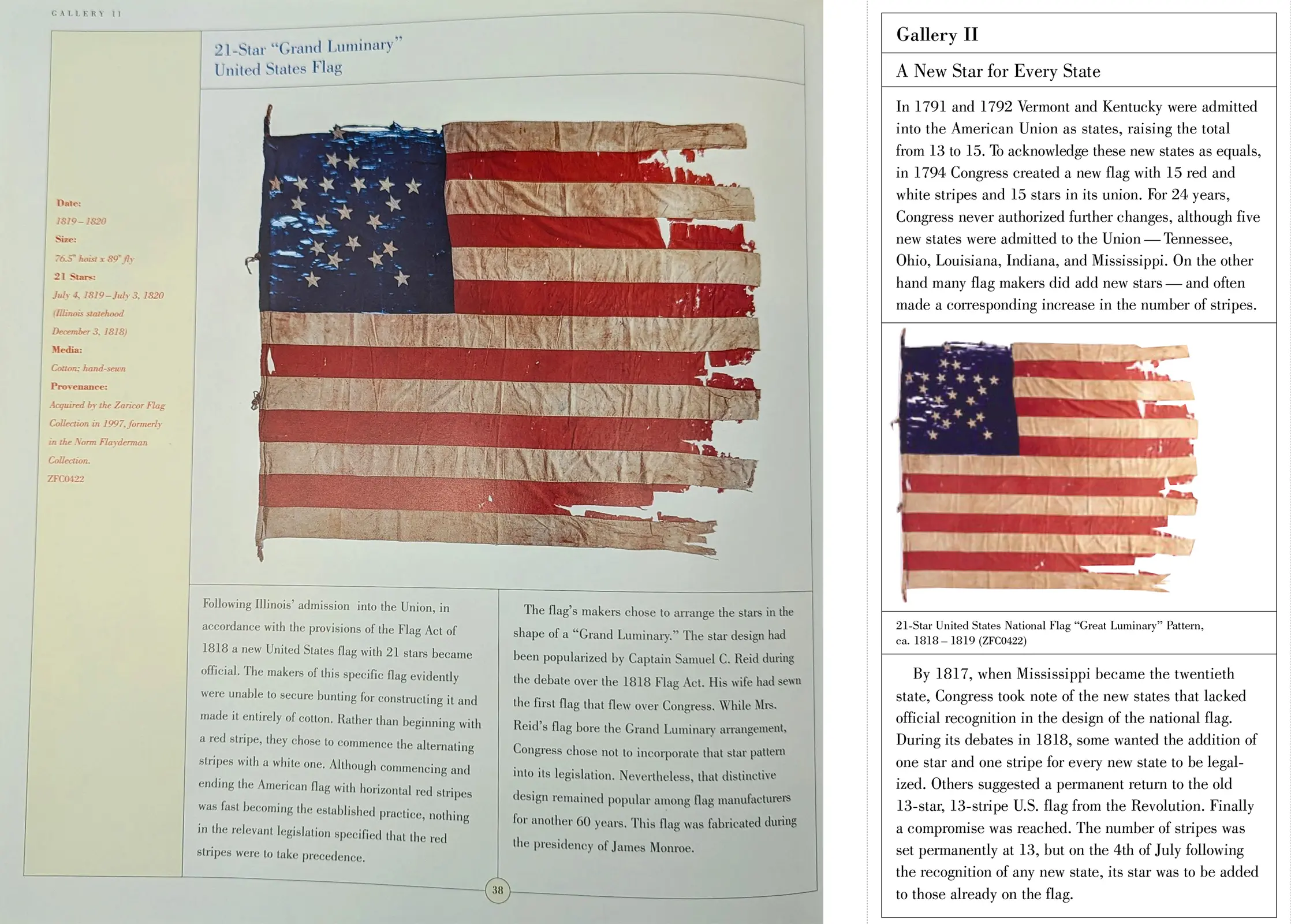 The flag's page in the book “The American Flag: Two Centuries of Concord and Conflict” and in the brochure for a California museum exhibit.
The flag's page in the book “The American Flag: Two Centuries of Concord and Conflict” and in the brochure for a California museum exhibit.
Book and Exhibit Brochure

×
Flag experts Howard M. Madaus and Whitney Smith included it in their book “The American Flag: Two Centuries of Concord and Conflict.” They determined it “was fabricated during the presidency of James Monroe.” Yet another of America’s top flag experts, James J. Ferrigan III, has seen the flag up close and also believes it dates back to Illinois becoming a state. He called it a “national treasure.”
The ALPLM is fortunate to acquire a flag that was examined again and again by America’s top flag experts, all of whom agreed it was made when Illinois became the 21st state.
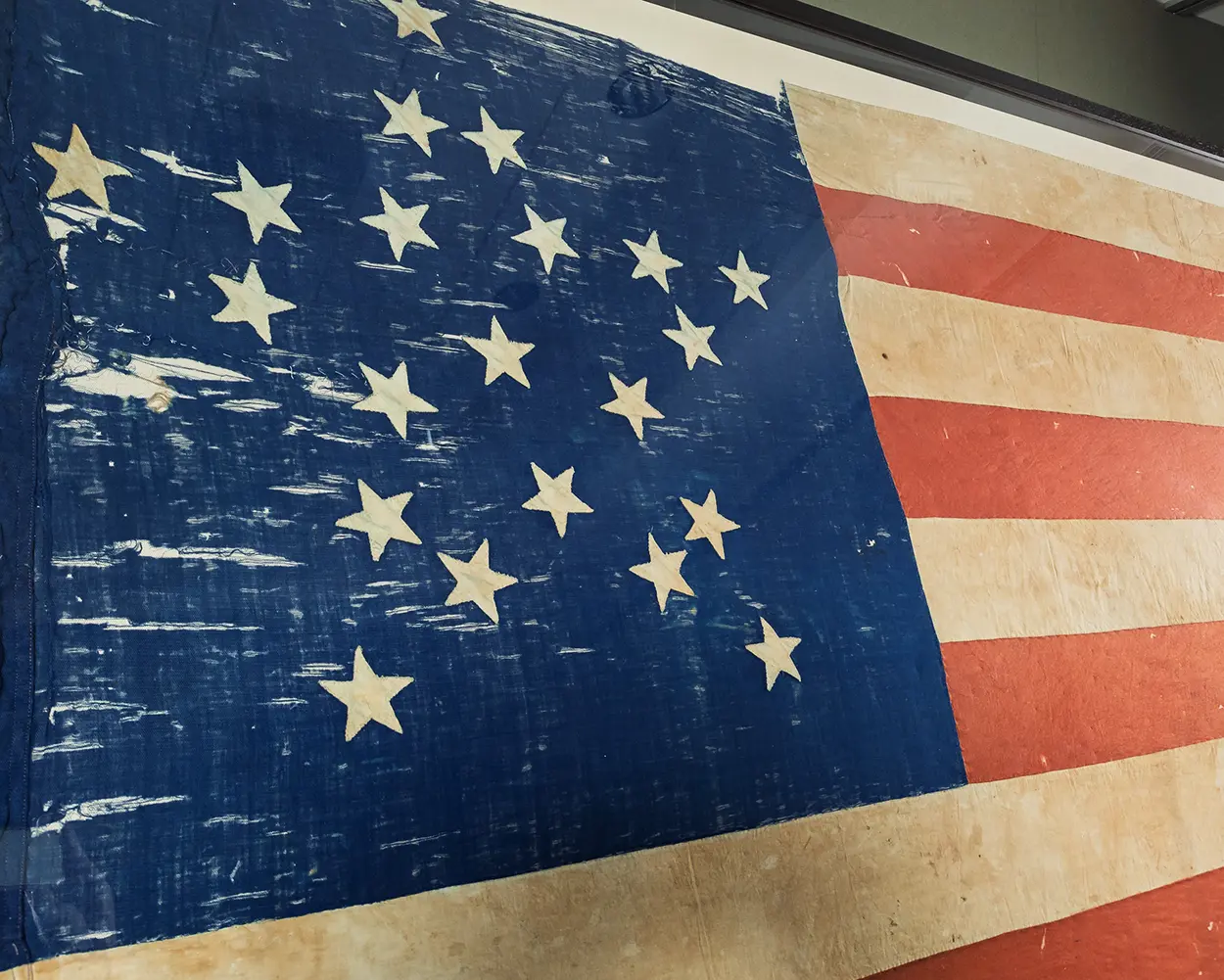 Close-up of the 21 stars on the flag. Note that the flag’s top stripe is white.
Close-up of the 21 stars on the flag. Note that the flag’s top stripe is white.
The flag's canton and stripes

×
Were 21-star flags ever used at any other period of American history? Well, sort of.
During the Civil War, citizens in both the North and South were known to create these things called “exclusionary flags.” These were flags that purposely left out states that either supported or rejected slavery. At the beginning of the conflict, America had a total of 34 states, 11 of which would eventually announce their secession. So an exclusionary flag made in the North might feature 23 stars (34-11=23). (President Lincoln, by the way, rejected the notion of exclusionary flags since he always believed the southern states remained a part of the Union and were simply in rebellion. He objected to anything that suggested America had actually been torn into two nations.)
There was significant variation in what was counted when people made their exclusionary flags. Should all 15 slave states be left out or only the 11 that seceded? What about the two where there was a public vote for secession but no official action? And then there was the issue of West Virginia and Nevada, states that joined during the war. At some points during the war, depending on what exactly a person decided to exclude, a total of 21 was possible.
But the many experts who looked at this flag knew all about exclusionary flags and determined that this wasn’t one. I can’t speak for them, but I see several features on this flag that argue against it coming from the 1860s. As mentioned earlier, its top and bottom stripes are white instead of red, an arrangement that was rare by the time of the Civil War as federal flags became increasingly standardized. It’s also a large flag that has seen extensive use. If a private citizen was creating an exclusionary flag as a sort of protest during the war, wouldn’t they make it a more manageable size and better protect it from the elements? Further, the use of natural dyes, rather than artificial ones that would have been available during the Civil War, also suggest an earlier date.
The flag collector Ben Zaricor spoke about what drove him to put together America’s largest private collection of flags. He said it was seeing the way people reacted to these symbols.
“I realized that it was we, the people, who gave the meaning to the flag and to our life as a nation. Through these old and sometimes ragged pieces of cloth, their stories helped me to understand the personality of our country and how we all have some story about a flag.”
I’m confident that people who encounter this flag at the ALPLM will be inspired to reflect on our shared history. They will bring their own experience and meaning to this powerful symbol of American – and Illinois – history.
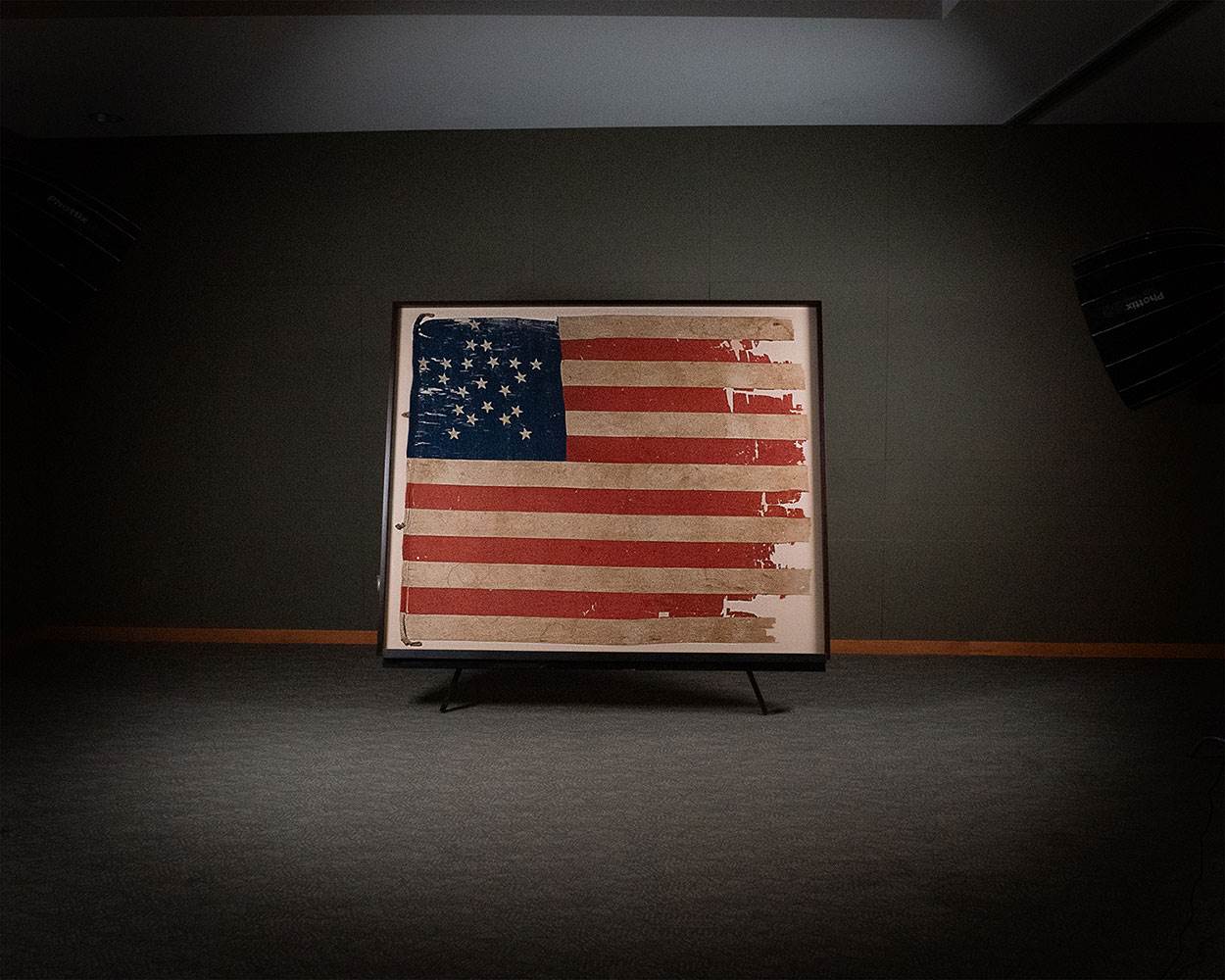
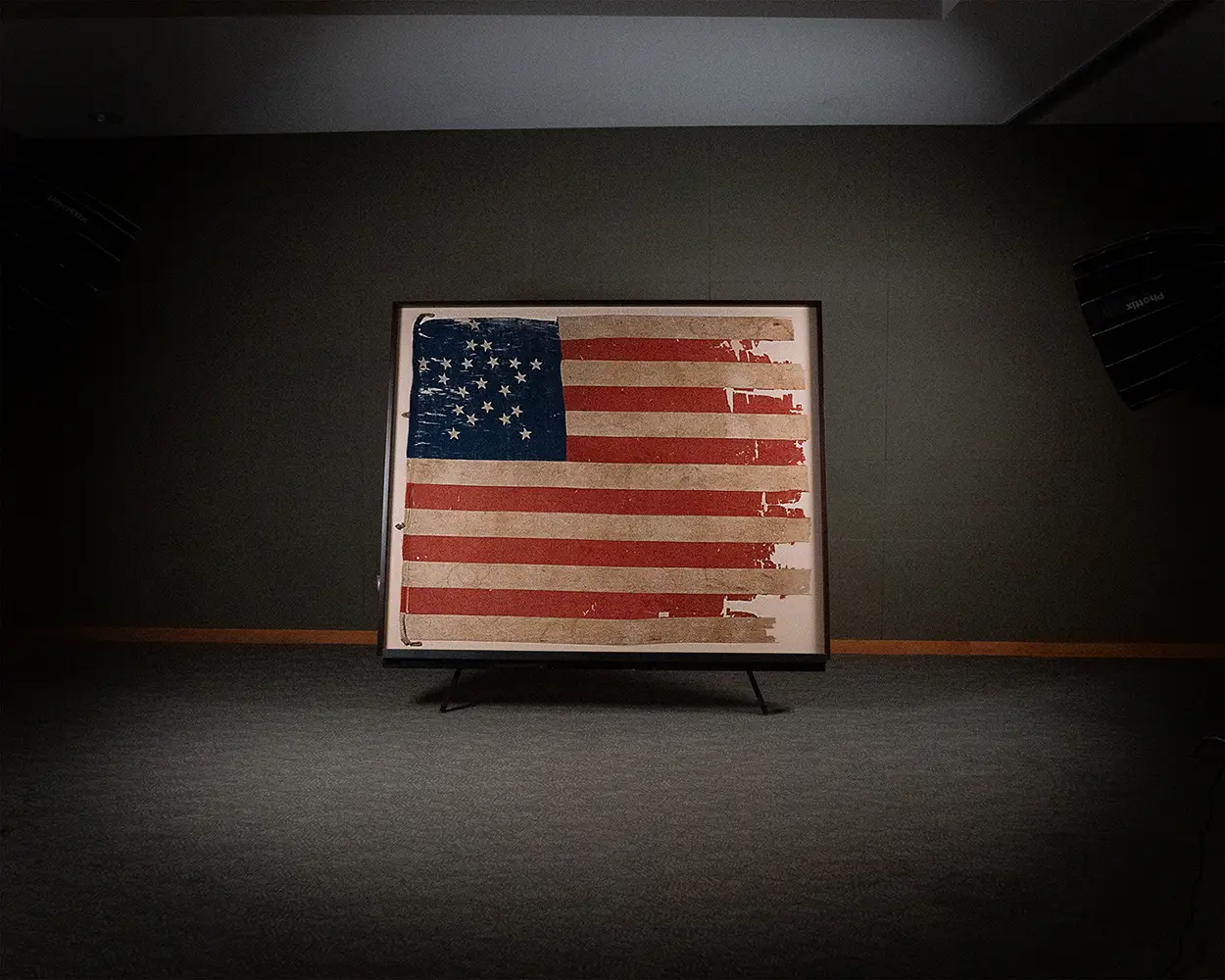
×
Hunt is the ALPLM’s head of acquisitions and special projects